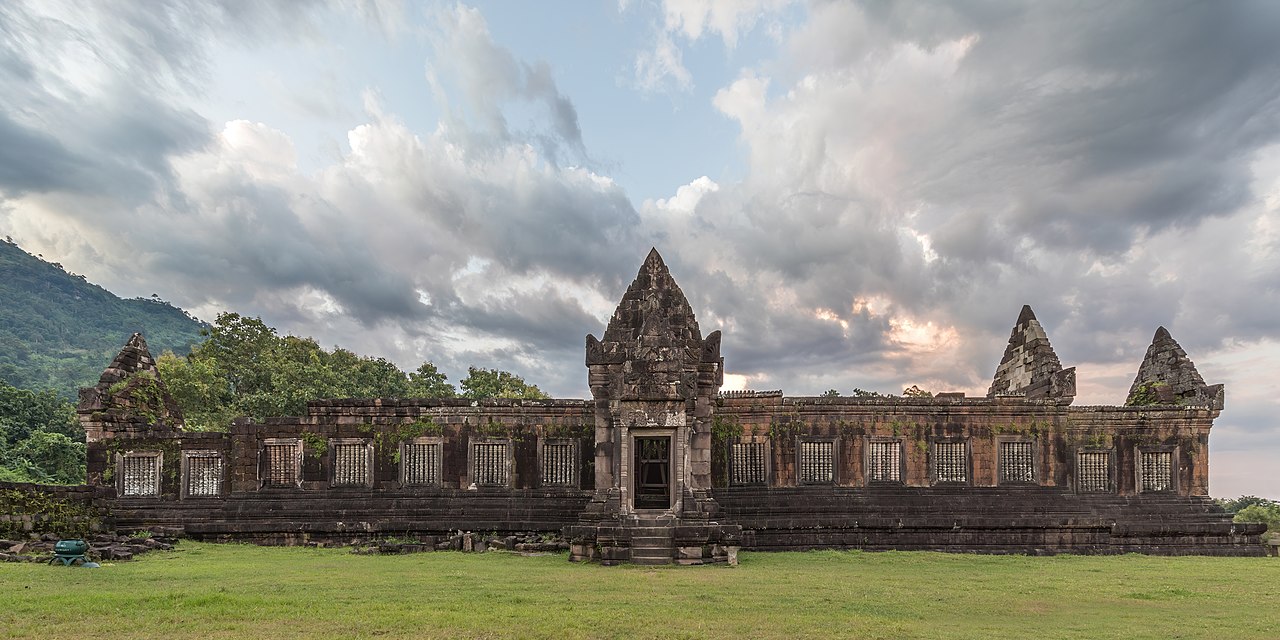Vat Phou Temple- Laos

Address
Vat Phou Temple- Muang Champassak, Laos
Diety
Shiva, Buddha
Introduction
Wat Phou is 10th Century Khmer temple in the South of Laos. On the West bank of the Mekong river South of Pakse are the ruins of an ancient Khmer temple named Wat Phou. The temple and associated settlements are inscribed on the UNESCO World Heritage List. Wat Phou or Vat Phu, which translates to “mountain temple” was built during the late 10th to early 11th century, which makes it older than Angkor’s best known monument, the Angkor Wat, which was built during the first half of the 12th century. Over the following centuries structures were added to the temple until the 14th century when the Angkor Empire went into decline. The Wat Phou was a temple dedicated to Shiva, one of the Gods of the Trimurti. In the 13th century it was converted into a Buddhist monastery. Even today the temple is still a place of worship for both Shiva & Buddhists.
Puranic Significance
The Wat Phou is located at the base of Phu Kao mountain, overlooking the plains towards the Mekong river. In ancient Khmer times the mountain was named Lingaparvata, which translates to “Linga Mountain”, because of the pillar like stone formation on top that resembles a linga, the representation of the God Shiva. Because of the natural linga on top of Phu Kao mountain the Khmer considered the mountain as well as the water from the spring originating on it as sacred. The various structures of the Wat Phou are built on seven terraces, aligned on an axis from the Mekong river bank towards the mountain. The Khmer built several large barays, some of which are now dry. The barays are huge water reservoirs that symbolize the oceans surrounding Mount Meru, the center of Hindu mythology. It is believed that the 11th century buildings were used during Hindu ceremonies. The lintels and pediments on the two large buildings are adorned with intricate carvings of Gods like Shiva and his consort Uma on Nandi, the sacred bull. Near the South palace is a shrine dedicated to the sacred bull Nandi, the mount of Shiva. Between the palaces and the main sanctuary are the remains of several structures, including six small brick towers that used to contain a linga on the 4th terrace and a Dvarapala guardian on the second terrace. The main sanctuary enshrined the linga, the representation of Shiva. The water stream from the mountain spring was channeled towards the linga in the main sanctuary, its holy water constantly bathing the linga. Today the sanctuary contains a much more recent large seated Buddha with three smaller Buddha images in front of it, all dressed in saffron robes. Much like the Angkor temples of the same period, the building is adorned with sculptings of Devatas, Apsaras, Dvarapala guardians and Kalas, a monster usually depicted without lower jaw. Its lintels and pediments are adorned with various sculptings including Vishnu on Garuda, Krishna killing Kansa, Indra riding the three headed elephant Airavata, Krishna defeating the Naga Kaliya and stories from the Ramayana, like the abduction of Sita.
Festivals
Every year the temple is the scene of the Wat Phou festival, locally called Boun Wat Phou Champasak. The festival is held at Makha Bucha day, during the full moon of the 3rd lunar month. During the 3 day festival thousands of Laos people flock to the grounds of the Wat Phou temple to pay respect to the Buddha and bring offerings.
Century/Period/Age
10th Century
Managed By
UNESCO world heritage site
Nearest Bus Station
Shrestrapura
Nearest Railway Station
Kanchanaburi
Nearest Airport
Champasak









